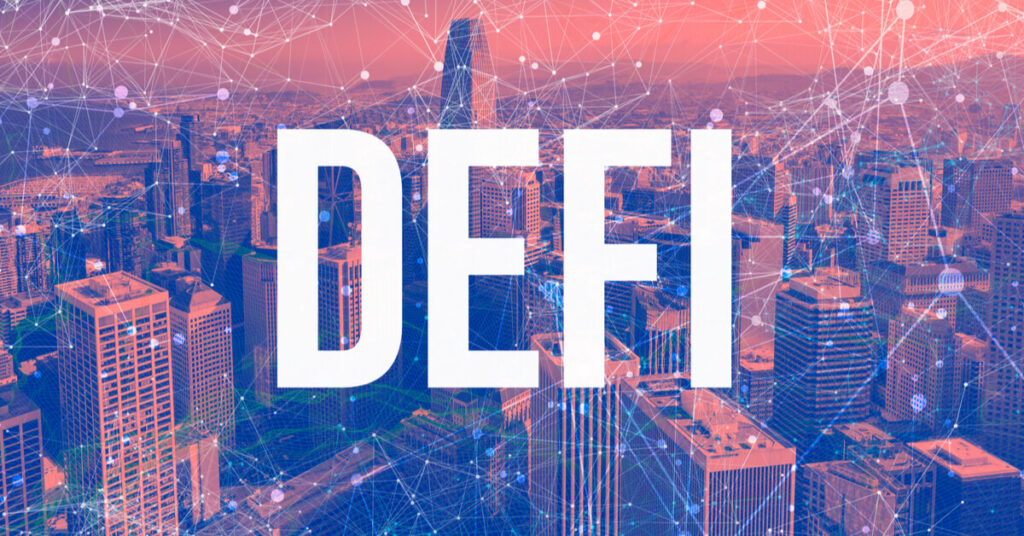
What Is All The Hype About DeFi?
Over the past year, the cryptocurrency and blockchain space has ballooned in terms of both demand and value, reaching over $2 trillion in market capitalization at its peak. One area that has recently seen a substantial increase in popularity is the ‘DeFi’ space.
This article will examine this space in detail, explaining what DeFi is and exploring some of the areas of finance that could benefit the most from DeFi projects. It will also explore some of the most popular of these projects and why they are a hit in the cryptocurrency and blockchain world.
What is DeFi?
DeFi, short for decentralized finance, is an umbrella term that describes a number of cryptocurrency and blockchain projects targeting the traditional world of finance such as lending, liquidity, and investment. DeFi’s guiding philosophy is that all middlemen and trusted third parties can and should be removed from all financial activity.
When you purchase something from a shop using a credit card, there is always a third party (the credit card company) sitting between you and the vendor. This third party has the power to stop, delay or amend the details of your purchase at will, so both you and the vendor have to rely on the trust you put in the third party to process and honor your purchase.
In a decentralized system, instead of this all-powerful intermediary, there is a record, with several validators, who are incentivized in some way to keep it going as efficiently as they can. This is essentially what a blockchain is, the validators in the blockchain’s case being the miners.
Now, a detailed explanation of how a blockchain works is beyond the scope and purpose of this article, but it is important to know note that the ‘mining reward’ you might have heard about is the incentive for miners of a blockchain to continue to validate the blockchain’s transactions as efficiently as they can.
For a more detailed explanation of how a blockchain and its miners work together, Satoshi’s original whitepaper here is essential reading.
When you make your purchase using a blockchain-based payment system, the transaction between you and the vendor is made available to these validators, who then all try to validate it as quickly as possible in competition for the mining reward. If one of them attempts to delay, change or stop the transaction, well, they simply put themselves behind in the race for the reward as other miners overtake them. This is what removes the control of any one individual and, as previously mentioned, is DeFi’s guiding philosophy.
The Current Space
In principle, this philosophy can be applied to any sort of financial activity which is precisely what is happening in the DeFi space today.
Take stablecoins for example. Stablecoins are cryptocurrencies that attempt to provide price stability by either being pegged to low-volatility fiat currencies or a collection of low-volatility assets as collateral.
Tether’s USDT is the most famous of these stablecoins. It is offered by the majority of the top exchanges as the default fiat equivalent pair, in lieu of USD itself. Over $62 billion worth of USDT has been minted, not to mention the numerous other currencies that Tether provides for such as GBPT, backed by pound sterling, and EURT, backed by the Euro.
Those exchanges are also a target of the DeFi space in another capacity; decentralizing their control. This is the core at the heart of ‘dexes’ or decentralized exchanges. The idea is to remove centralized parties in control of a cryptocurrency exchange, which even in cryptocurrency’s short past, have been the target of a number of large-scale and successful breaches. The largest exchange by volume, Binance, has engaged with the idea, launching Binance Decentralized Exchange on its own purpose-built blockchain.
The latest innovation in the DeFi space is the idea of incentivizing cryptocurrency enthusiasts to ‘stake’ their investments which are then used for a variety of financial activities including lending and providing liquidity to markets. So far, over $15 billion has been committed to projects such as AAVE, SUSHI, and Reserve Rights, with that number expected to grow as the market expands.
The Future of DeFi
This expansion, according to many in the crypto-universe, will usher in a new phase of cryptocurrency and blockchain adoption. However, like with all things new in the cryptocurrency world, there are likely to be teething problems that will need to be sorted out before DeFi products truly hit the mainstream.
Although the cryptocurrency world is approaching this new innovative area with enthusiasm, there is still a long way for the DeFi space before it becomes part of everyday finance, which means there are likely to be risks ahead but also valuable opportunities.
In order to get involved in the world of DeFI, your first step is to get yourself some crypto, which you can then put to work in the ever growing array of DeFi applications. When purchasing your crypto, be sure to choose a non-custodial exchange like Xcoins, so you are in control of your coins and you can therefore move them on to whatever platform or project you desire.
To stay up to date on all things crypto, like Xcoins on Facebook, follow us on Twitter and LinkedIn and sign up at the bottom of the page to subscribe.

